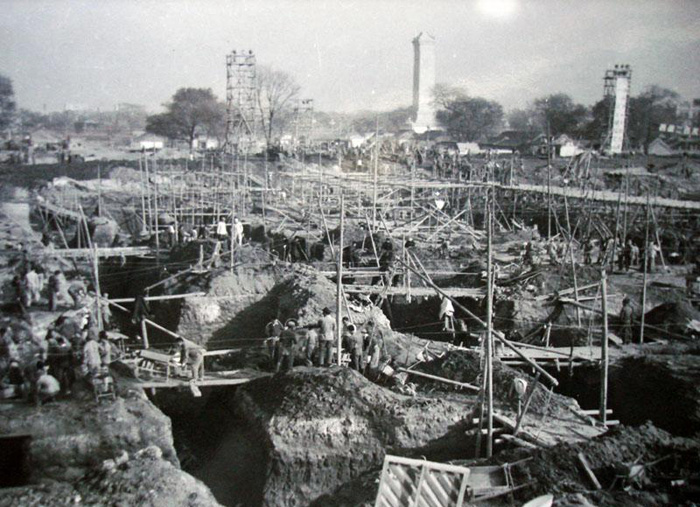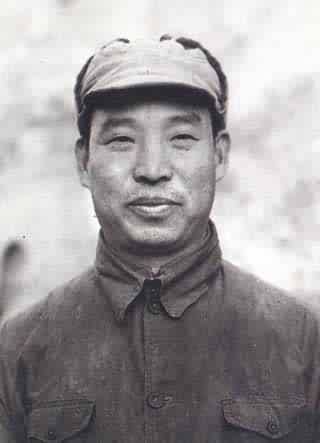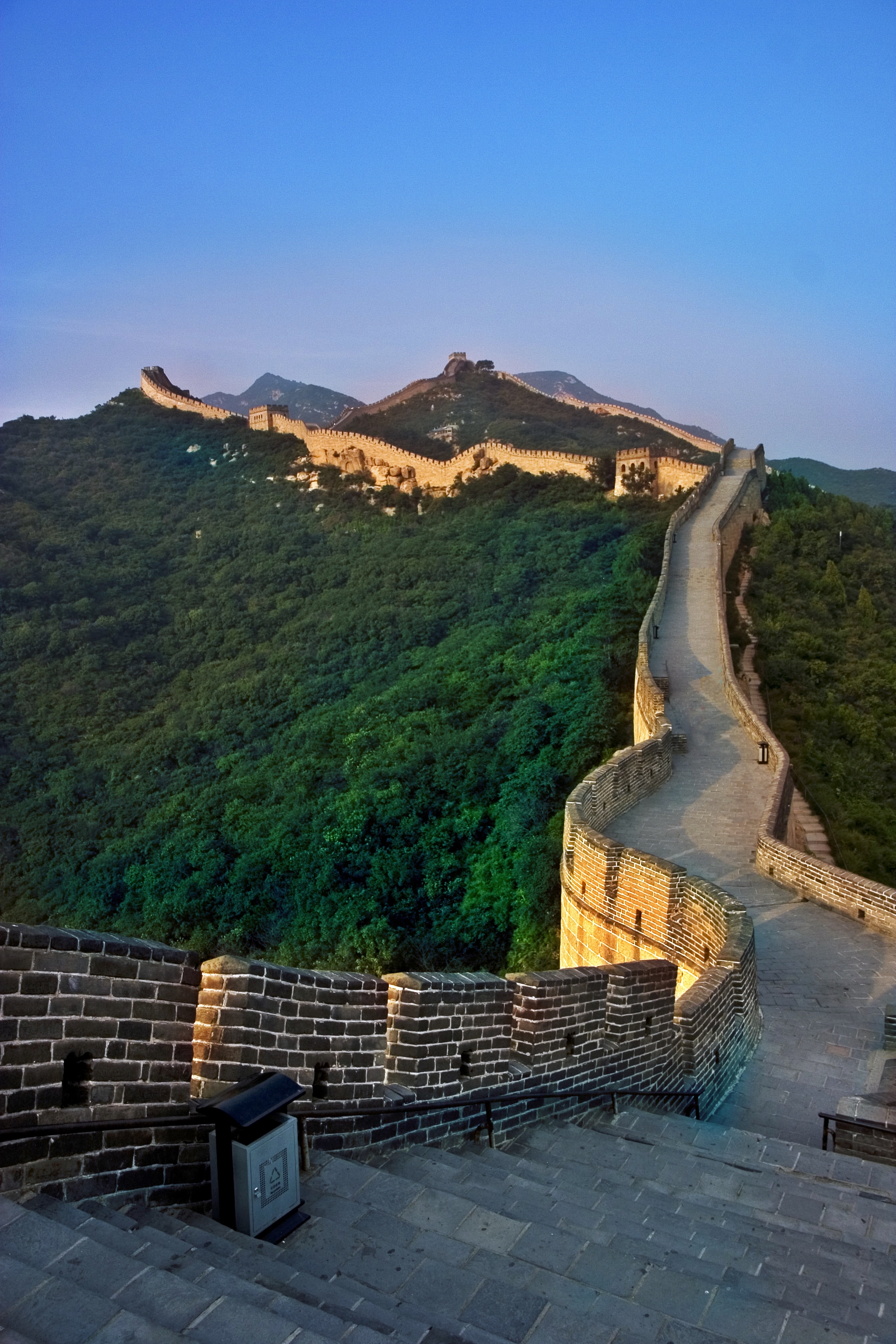|
Beijing
Beijing, Chinese postal romanization, previously romanized as Peking, is the capital city of China. With more than 22 million residents, it is the world's List of national capitals by population, most populous national capital city as well as China's List of cities in China by population, second largest city by urban area after Shanghai. It is located in North China, Northern China, and is governed as a Direct-administered municipalities of China, municipality under the direct administration of the Government of the People's Republic of China, State Council with List of administrative divisions of Beijing, 16 urban, suburban, and rural districts.Figures based on 2006 statistics published in 2007 National Statistical Yearbook of China and available online at archive. Retrieved 21 April 2009. Beijing is mostly surrounded by Hebei Province and neighbors Tianjin to the southeast; together, the three divisions form the Jing-Jin-Ji, Jing-Jin-Ji cluster. Beijing is a global city and ... [...More Info...] [...Related Items...] OR: [Wikipedia] [Google] [Baidu] |
Tongzhou District, Beijing
Tongzhou is a district of Beijing. It is located in southeast Beijing and considered the eastern gateway to the nation's capital. Downtown Tongzhou itself lies around east of central Beijing, at the northern end of the Grand Canal (China), Grand Canal (on the junction between the Tonghui Canal and the Northern Canal) and at the easternmost end of Chang'an Avenue. The entire district covers an area of , or 6% of Beijing's total area. It had a population of 673,952 at the 2000 Census, and has seen significant growth and development since then, growing to a population of 1,184,000 at the 2010 Census and 1,840,295 at the 2020 census. The district is subdivided into four subdistricts, ten towns, and one ethnic township. History Tongzhou was founded in 195 BC during the Western Han dynasty under the name of Lu (路) County, although there is evidence for human settlement in the Neolithic. At the start of the Eastern Han dynasty the character Lu by which it was known was altered by ... [...More Info...] [...Related Items...] OR: [Wikipedia] [Google] [Baidu] |
Forbidden City
The Forbidden City () is the Chinese Empire, imperial Chinese palace, palace complex in the center of the Imperial City, Beijing, Imperial City in Beijing, China. It was the residence of 24 Ming dynasty, Ming and Qing dynasty, Qing dynasty List of Chinese monarchs, Emperors, and the center of political power in China for over 500 years from 1420 to 1924. The palace is now administered by the Palace Museum. As a World Heritage Site, UNESCO World Heritage Site, it is one of the most popular tourist attractions in the world. The Forbidden City is arguably the most famous Chinese palace, palace in all of History of China, Chinese history, and is the largest preserved Palace, royal palace complex still standing in the world. The Forbidden City was constructed from 1406 to 1420, and was the imperial palace and winter residence of the Emperor of China from the Ming dynasty (since the Yongle Emperor) to the end of the Qing dynasty, between 1420 and 1924. The Forbidden City served as ... [...More Info...] [...Related Items...] OR: [Wikipedia] [Google] [Baidu] |
Beijing Central Business District
The Beijing central business district, or Beijing CBD (), is a central business district and the primary area for finance, Mass media, media, and business services in Beijing, China. Beijing CBD occupies 3.99 km2 of the Chaoyang District, Beijing, Chaoyang District on the east side of the city. Geographically situated to the east of the city center, sandwiched between the 3rd Ring Road (Beijing), 3rd Ring Road and the 4th Ring Road, the Beijing CBD is currently undergoing large-scale development. Economic history and importance As Beijing is becoming one of the most important international financial centers in China, Beijing CBD was recently positioned as the secondary core area in Beijing's International Financial Center Development strategic plan published in May, 2008. Beijing CBD is also emerging as China's media center as Beijing Television Station (BTV) just moved in its new headquarters (Beijing TV Centre) in this area and the new CCTV Headquarters was officially ... [...More Info...] [...Related Items...] OR: [Wikipedia] [Google] [Baidu] |
Temple Of Heaven
The Temple of Heaven () is a complex of imperial Religious Confucianism, religious Confucian buildings situated in the southeastern part of central Beijing. The complex was visited by the Emperor of China, Emperors of the Ming dynasty, Ming and Qing dynasty, Qing dynasties for annual ceremonies of prayer to Tian, Heaven for a good harvest. The Temple of Heaven was inscribed as a UNESCO World Heritage Site, World Heritage site in 1998 and was described as "a masterpiece of architecture and landscape design which simply and graphically illustrates a cosmogony of great importance for the evolution of one of the world's great civilizations..." as the "symbolic layout and design of the Temple of Heaven had a profound influence on architecture and planning in the Far East over many centuries." History The temple complex was constructed from 1406 to 1420 during the reign of the Yongle Emperor of Ming Dynasty, who was also responsible for the construction of the Forbidden City in Beij ... [...More Info...] [...Related Items...] OR: [Wikipedia] [Google] [Baidu] |
Mayor Of Beijing
The mayor of Beijing, officially the Mayor of the Beijing Municipal People's Government, is the head of Beijing, Beijing Municipality and leader of the Beijing Municipal People's Government. The mayor is elected by the Beijing Municipal People's Congress, and responsible to it and its Standing Committee. The mayor is a Civil service of the People's Republic of China, provincial level official and is responsible for the overall decision-making of the municipal government. The mayor is assisted by an executive vice mayor as well as several vice mayors. The mayor generally serves as the deputy secretary of the Beijing Municipal Committee of the Chinese Communist Party and as a member of the Central Committee of the Chinese Communist Party, CCP Central Committee. The mayor the second-highest ranking official in the city after the Party Secretary of Beijing, secretary of the CCP Beijing Committee. The current mayor is Yin Yong (politician), Yin Yong, who took office on 28 December 2022. ... [...More Info...] [...Related Items...] OR: [Wikipedia] [Google] [Baidu] |
List Of Administrative Divisions Of Beijing
Beijing is one of the four direct-administered municipalities of the People's Republic of China, and is divided into 16 districts. Administrative divisions All of these administrative divisions are explained in greater detail at Administrative divisions of the People's Republic of China. This chart lists only county-level divisions of Beijing. Recent changes in administrative divisions Historical divisions ROC (1911–1949) References {{Subdivision of major cities of China Administrative divisions * Beijing Beijing, Chinese postal romanization, previously romanized as Peking, is the capital city of China. With more than 22 million residents, it is the world's List of national capitals by population, most populous national capital city as well as ... ... [...More Info...] [...Related Items...] OR: [Wikipedia] [Google] [Baidu] |
Great Hall Of The People
The Great Hall of the People is a state building situated to the west of Tiananmen Square in Beijing. It is used for legislative and ceremonial activities by the government of the People's Republic of China. The People's Great Hall functions as the meeting place for the full sessions of China's legislature, the National People's Congress, which occurs every year during March along with the national session of the Chinese People's Political Consultative Conference, a political advisory body. The Great Hall is also the meeting place of the National Congress of the Chinese Communist Party, which, since the 12th National Congress of the Chinese Communist Party, 12th conference in 1982, has occurred once every five years, and the party's Central Committee of the Chinese Communist Party, Central Committee which meets approximately once a year. The Hall is also used for many special events, including national level meetings of various social and political organizations, large anniversar ... [...More Info...] [...Related Items...] OR: [Wikipedia] [Google] [Baidu] |
China Zun
CITIC Tower, also known as China Zun, is a supertall skyscraper in the Central Business District of Beijing, China. The 109-story, building constructed by China Construction Third Engineering Bureau is the tallest in the city, surpassing the China World Trade Center Tower III by . On 18 August 2016, CITIC Tower surpassed China World Trade Center Tower III in height, becoming Beijing's tallest building. The tower structurally topped out on 9 July 2017, fully topped out on 18 August 2017, and was completed in late 2018, making CITIC Tower the tallest completed building of 2018. , it is the tallest building with a rooftop helipad in the world. The nickname China Zun comes from the ''zun'', an ancient Chinese wine vessel which inspired the building design, according to the developers, the CITIC Group. The groundbreaking ceremony of the building took place in Beijing on 19 September 2011, and the constructors expected to finish the project within five years. CITIC Tower is Northe ... [...More Info...] [...Related Items...] OR: [Wikipedia] [Google] [Baidu] |
Beijing Municipal People's Congress
The Beijing Municipal People's Congress is the local people's congress of Beijing. With 774 members in 2023, the Municipal People's Congress is the elected council of Beijing that oversees the Beijing Municipal People's Government. The Beijing Municipal People's Congress is elected for a term of five years. It holds annual sessions every spring, usually lasting from 5 to 7 days. Between these annual sessions, the functions of the Municipal People's Congress are handled by its permanent body, the Standing Committee. Organization Standing Committee * General Office * Legal Affairs Office * Office of Internal Justice * Office of Finance and Economics * Office of Education, Science, Culture, Health and Sports * Urban Construction and Environmental Protection Office * Rural Office * Ethnic, Religious and Overseas Chinese Affairs Office * Research Room * Representative Liaison Office * Personnel Office * Party Committee Chairpersons of the Standing Committee See also * S ... [...More Info...] [...Related Items...] OR: [Wikipedia] [Google] [Baidu] |
Party Secretary Of Beijing
The secretary of the Beijing Municipal Committee of the Chinese Communist Party is the leader of the Beijing Municipal Committee of the Chinese Communist Party, Beijing Municipal Committee of the Chinese Communist Party (CCP). As the CCP is the One-party state, sole ruling party of the China, People's Republic of China (PRC), the secretary is the highest ranking post in Beijing. The secretary is officially appointed by the Central Committee of the Chinese Communist Party, CCP Central Committee based on the recommendation of the Organization Department of the Chinese Communist Party, CCP Organization Department, which is then approved by the Politburo of the Chinese Communist Party, Politburo and its Politburo Standing Committee of the Chinese Communist Party, Standing Committee. The secretary can be also appointed by a plenary meeting of the Beijing Municipal Committee, but the candidate must be the same as the one approved by the central government. The secretary leads the Standing ... [...More Info...] [...Related Items...] OR: [Wikipedia] [Google] [Baidu] |
Badaling
Badaling () is the site of the most visited section of the Great Wall of China, approximately northwest of Beijing's city center, in Badaling Town, Yanqing District, Beijing municipality. The portion of the wall running through the site was built in 1504 during the Ming Dynasty, along with a military outpost reflecting the location's strategic importance. The highest point of Badaling is Beibalou (北八樓), approximately above sea level. Badaling Great Wall was built in the Ming Dynasty (1505) to occupy a commanding and strategic position for protecting the Juyongguan Pass (Juyongguan section of the Great Wall) to its south, further protecting the city of Beijing."Badaling Great Wall" ChinaTour.Net Accessed 2014-1-18 The portion of the wall at Badaling has undergone restoration, and in 1 ... [...More Info...] [...Related Items...] OR: [Wikipedia] [Google] [Baidu] |
Wei Xiaodong
Wei Xiaodong (; born May 1961) is a Chinese politician, currently serving as chairman of the Beijing Municipal Committee of the Chinese People's Political Consultative Conference. Wei was a delegate to the 12th National People's Congress. He was a representative of the 19th National Congress of the Chinese Communist Party and is a representative of the 20th National Congress of the Chinese Communist Party. Early life and education Wei was born in Zhangzhou, Fujian, in May 1961. After resuming the college entrance examination, in 1979, he was accepted to Xiamen University, where he majored in plan statistics. He joined the Chinese Communist Party (CCP) in May 1983 upon graduation. Career After university in 1983, Wei was assigned to the . After the institutional reform in 1988, he worked in the . Starting in April 1988, he served in several posts in the Central Institutional Organization Commission, including director of the Comprehensive Department, director of the Secon ... [...More Info...] [...Related Items...] OR: [Wikipedia] [Google] [Baidu] |








